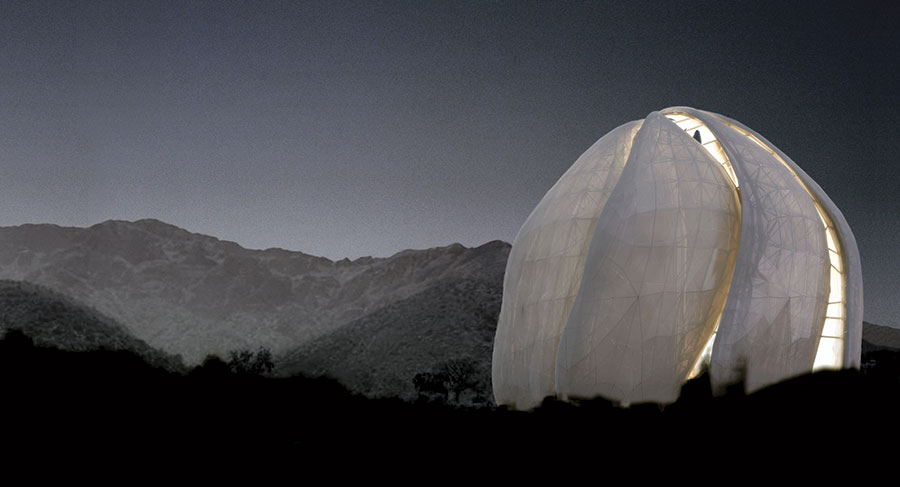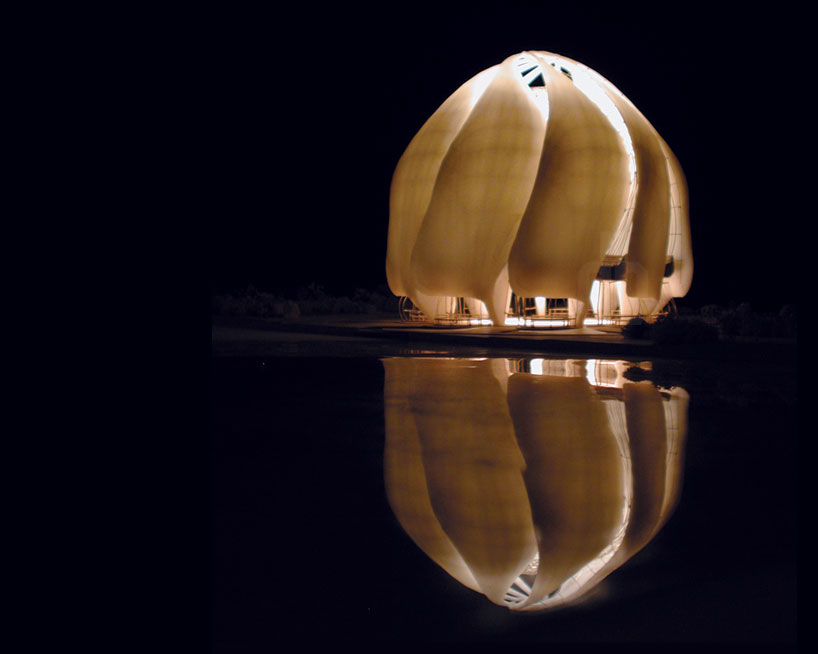Baha'i Temple of South America
Baha'i Temple of South America
Sun Worshiper: A building with a complex skin blooms in the foothills of the Andes thanks to a multinational, multidisciplinary team.

Santiago, Chile
People/Products
In 2003, the Toronto firm Hariri Pontarini Architects won a competition for the Baha’i Temple of South America in Santiago, Chile, with a nine-sided design featuring petal-like elements that twist and rise to a central oculus. Thirteen years later, the project is nearly complete—and its innovative cast-glass skin is a victory for the architects, engineers, fabricators, and contractors who sweated every detail to make sure it could withstand the rigors of its mountainside location.
With its light-bathed interior, the temple embodies the Baha’i principle of light as a unifying element. “It’s designed to last 400 years, and, in keeping with the faith’s history and philosophy, we looked for an ancient, durable material that would filter light from outside or within,” says Doron Meinhard, project manager and associate in charge. Principal Siamak Hariri’s original scheme was clad on the interior and exterior in alabaster, a stone that’s translucent when cut thin enough.
But aesthetic and maintenance concerns precluded that choice. The building sits in the foothills of the Andes, where harsh sun, summer temperatures that can soar past 100 degrees Fahrenheit, and daily temperature swings as wide as 64 degrees are the norm. Alabaster loses its translucency above 104 degrees, and it’s somewhat soft, so it can be damaged by air pollution or water, says Meinhard. The architects, along with engineering firm Simpson Gumpertz & Heger (SGH), began to consider glass cladding instead, and settled on marble panels for the interior.
After many rounds of testing for strength, seismic performance, and thermal stresses, patterned cast glass was chosen for its light-filtering qualities and durability over laminated or annealed glass. The architects worked with glass artist Jeff Goodman on the one-of-a-kind formulation. They opted for borosilicate glass instead of soda-lime glass, because the latter cracked during thermal stress testing, making it unsuitable for a locale with such extreme temperature variations, says James Parker, SGH principal.
More:
http://www.architecturalrecord.com/articles/11651-bahai-temple-of-south-america
[center]


Bahai House of Worship


 [/center]
[/center]






 [/center]
[/center]